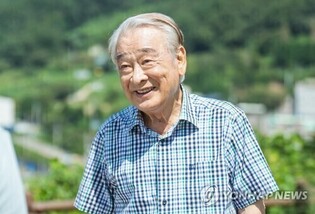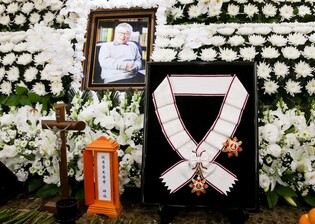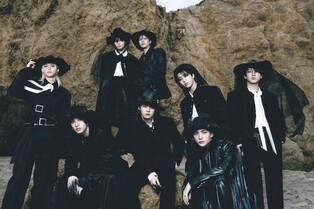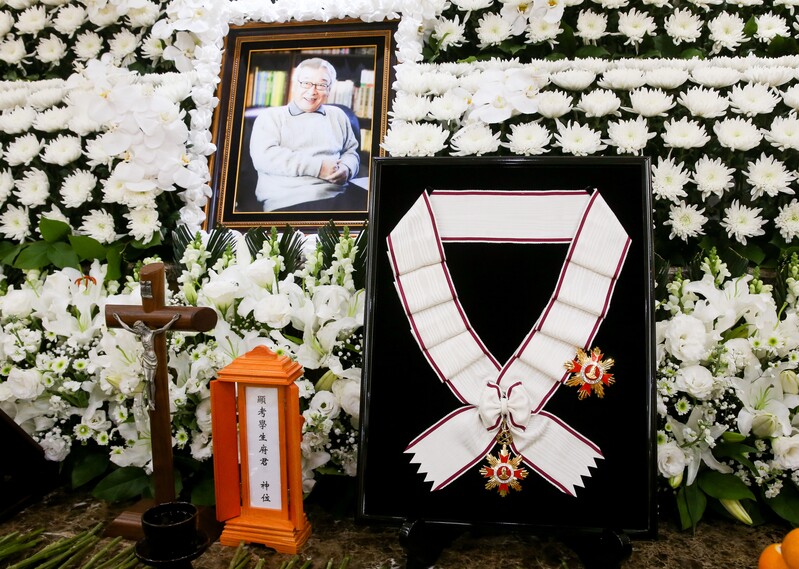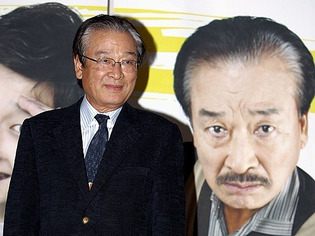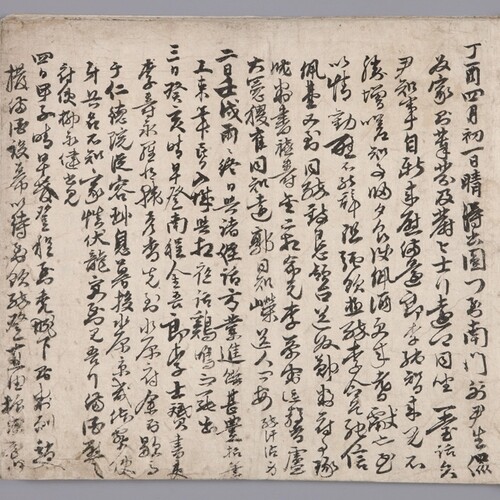 |
| ▲ This photo of the National Treasure “Yi Sun-sin’s ‘Nanjung Ilgi’ (War Diary) and the Correspondence and the ‘Imjin Jangcho’ Records” are provided by the National Museum of Korea. (PHOTO NOT FOR SALE) (Yonhap) |
SEOUL,
Nov. 27 (Yonhap) --
In the first month of 1592, the year of Imjin, Adm. Yi Sun-sin (1545–1598) penned these words in his diary. At a glance, the entry may seem like an ordinary slice of daily life. He wrote about his younger brother Yeopil, his nephew Bong and his eldest son Hoe visiting him at dawn for conversation, and about gifts and letters he received for the holiday.
Yet the diary, which calmly records day-to-day events over some seven years, vividly captures the turbulent realities of the era.
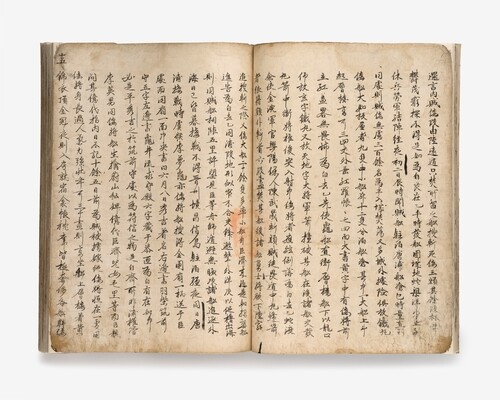 |
| ▲ This photo of the National Treasure “Yi Sun-sin’s ‘Nanjung Ilgi’ (War Diary) and the Correspondence and the ‘Imjin Jangcho’ Records” are provided by the National Museum of Korea. (PHOTO NOT FOR SALE) (Yonhap) |
From urgent reports of Japanese forces arriving off the coast of Busan to fierce battles and the joy of victory, the writings preserve the history left behind by “Yi Sun-sin, the human being,” who endured the brutal years of war in person.
Treasured artifacts bearing the admiral’s personal imprint — including the National Treasure original manuscript of “Nanjung Ilgi” (War Diary), letters to relatives and a long sword — will be brought together in one place, offering a rare chance to face the “history” preserved for generations by his descendants.
The National Museum of Korea announced Thursday that it will hold a special exhibition titled “Our Yi Sun-sin” at its Special Exhibition Hall on the first floor of the permanent exhibition building, marking the 480th anniversary of the admiral’s birth and the 80th anniversary of Korea’s liberation.
The exhibition focuses on shedding light on Yi not only as a war hero but also as a human being. A total of 258 artifacts (369 items), including 20 major items (34 pieces) designated as National Treasures or Treasures and kept by Yi’s family, as well as items now held in Japan and Sweden, will be displayed.
Six National Treasures (15 items) and 39 Treasures (43 items) will make a rare “outing” in Seoul, according to the museum. “Visitors will encounter the human Yi Sun-sin, who lived a life marked by personal sorrow and pain, a commander’s heavy responsibility and love for his men, and unwavering patriotic devotion,” a museum official said.
The exhibition offers a rare opportunity to see the original “Nanjung Ilgi and Yi Sun-sin’s Correspondence and the Imjin Reports,” both National Treasures. On display will be seven volumes of Yi’s handwritten diaries from 1592, when the Imjin War broke out, to 1598, along with a collection of letters he sent to relatives.
Also featured is “Imjin Jangcho,” a later compilation of 61 official battlefield reports Yi submitted to the royal court. The museum emphasized that this marks the first time the original artifacts of Yi’s family, including the “Nanjung Ilgi,” are being shown together in Seoul, vividly conveying the admiral’s thoughts and resolve.
A nearly identical pair of swords, revealed at a museum for the first time since being designated a National Treasure in 2023, will also be on view. An inscription on the hilt reads that they were made in April 1594 by craftsmen Taegwiryeon and Imusaeng, matching records in the 1795 compilation “Collected Works of Admiral Yi Sun-sin.”
 |
| ▲ This photo of the National Treasure “Yi Sun-sin’s Long Sword” is provided by the National Museum of Korea. (PHOTO NOT FOR SALE) (Yonhap) |
An inscription on one of the blades bears a verse attributed to Yi himself:
“With a three-foot sword, I swear to heaven — mountains and rivers tremble;
With one swing, I sweep all away — blood floods the land.”
As the exhibition centers on Yi’s own records, visitors can glimpse his life and spirit throughout. In the “Nanjung Ilgi,” Yi confides that his “heart burned with anguish” after hearing news of his son’s illness, and before the Battle of Myeongnyang, he reaffirmed his resolve: “Those who seek to live will die, and those who seek to die will live.”
Also noteworthy is the final account of Yi’s life recorded in “The Chronicle of Admiral Yi Sun-sin,” written by his nephew Yi Bun.
Artifacts related to Japanese feudal lords of the invasion force are also displayed. These include armor and spears from the family of Tachibana Muneshige, the Japanese commander at the Battle of Byeokjegwan, and a folding screen depicting the Battle of Ulsan Castle from the Nabeshima Naoshige clan — all being unveiled in Korea for the first time.
A portrait of Toyotomi Hideyoshi, who launched the Imjin War, will also be shown.
Especially striking is the reunion of two folding screens separated by some 9,400 kilometers. The set, titled “Battle Records of the Japanese Campaign,” depicts major battles from 1598, the final year of the war. Long held separately by Sweden’s Museum of East Asian Antiquities and the National Museum of Korea, the two halves will be reunited in one space for the first time.
The exhibition concludes with a quotation engraved on the stele of “The Royal Epitaph for Yi Sun-sin,” erected in Asan, South Chungcheong Province, in 1794. The inscription cites a Ming Chinese general’s praise of Yi: “Yi Sun-sin possessed the ability to govern the world and performed deeds worthy of stitching the torn sky and washing the darkened sun.”
Yu Hong-jun, director of the National Museum of Korea, said he hopes the exhibition will serve as “a record of encouragement for all those striving to overcome hardship.”
The exhibition will be free to the public from its opening on Thursday through Dec. 4. Admission will also be free on Dec. 16, the anniversary of Yi’s death. The exhibition runs through March 3 next year.
(C) Yonhap News Agency. All Rights Reserved


















